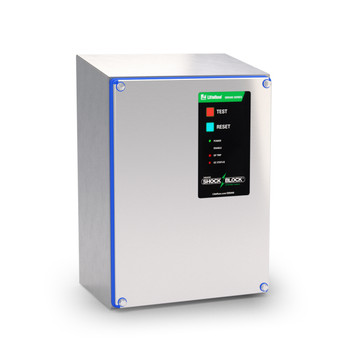Description
 SB5000 Industrial Shock-Block Manual
SB5000 Industrial Shock-Block Manual
This Shock Block is a 208 V Class A GFCI, allowing commercial kitchens, construction sites, and other non-dwelling units with wet areas to meet NEC 210.8(B) for their three-phase loads up to 60A.
The standard enclosure is IP 69K/NEMA 4X and outdoor rated, suitable for all industrial environments including high temperature washdown used in food production.
General Note:
The Industrial Shock Block® SB5000 series is a personnel protection device designed to meet the requirements for special-purpose GFCIs defined by UL 943C. This standard outlines GFCI classes specifically designed for use in industrial facilities. The Industrial Shock Block includes DFT harmonic filtering, an automatic self-test feature, and is compliant to the UL 1998 Software in Programmable Components standard . The load must be three-phase without a neutral. Ground Wire (Load-Ground) Monitor The Industrial Shock Block also monitors the ground wire (load-ground) connection between the Industrial Shock Block and load. This is recommended for Class A GFCI devices. If the ground-return path is broken, the Industrial Shock Block will trip and provide an alarm by changing the state of the alarm contacts. This monitoring circuit includes an extra wire (pilot wire) between the Industrial Shock Block and load. At the load, the pilot wire is connected to a termination device. The other end of the termination device is connected to the load ground (typically the enclosure).















